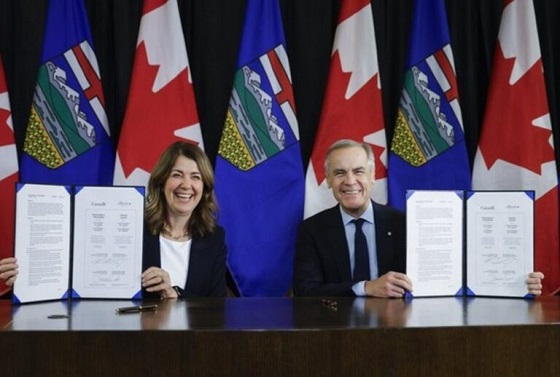Alberta
Tough times call for free access to mental health – Alberta NDP

From the Alberta NDP
NDP CALLS FOR ALBERTANS TO HAVE ACCESS TO FIVE PROVINCIALLY FUNDED MENTAL HEALTH SESSIONS
Alberta’s NDP Official Opposition is calling on the provincial government to help all Albertans get through the incredibly difficult COVID-19 pandemic by making five mental health therapy sessions available through the provincial insurance plan, with an online assessment tool to help connect them with a mental health professional.
“Albertans have endured incredible stress throughout this year, from job losses to social isolation to the loss of loved ones,” said Rachel Notley, Leader of Alberta’s NDP Official Opposition. “Heading into the holidays, I know how painful it is that we won’t be able to gather with our friends and extended family. For many, the holidays are always tough, and this year will be especially hard.
“Many Albertans need someone to talk to and help them process everything they’ve been through in a healthy way.
The Opposition is calling on the provincial government to launch a simple online tool to help Albertans assess their mental health needs and then connect them to five provincially insured sessions with a registered healthcare provider. Using the provincial health care plan means no out-of-pocket costs for anyone with a provincial health number. While the cost of the recommendation will depend on Albertans’ uptake of the program, the Opposition recommends the government make a commitment to fund up to $100 million worth of mental health support.
Dr. Keith Dobson is a Professor of Clinical Psychology at the University of Calgary, as well as a senior consultant for the Opening Minds program of the Mental Health Commission of Canada. He has been at the University of Calgary since 1989 in a variety of roles, including Head of Psychology and a member of the Board of Governors. He is a recognized expert in the field of mental health and the development and delivery of psychological treatment programs.
“Mental health needs were largely unmet before the pandemic and have grown considerably since,” Dr. Dobson said. “Estimates are that rates of anxiety and depression have at least doubled since early 2020, and that rates of alcohol use and domestic violence have also increased. We have evidence-based psychological and counseling services that have been, and can be, delivered using technology. The College of Alberta Psychologists has well developed standards for the provision of this service, and there is an available pool of trained and qualified service providers. This initiative is timely and needs serious consideration by the government.”
Dr. Judi Malone, CEO of the Psychologists’ Association of Alberta, said all Albertans, regardless of income, should have access to psychological services.
“The psychological health and wellness of Albertans can be substantively improved by enhancing access to appropriate mental health treatment,” Malone said. “Community and family supports are invaluable but when psychotherapy is warranted it needs to be provided by qualified professionals. Cost is a barrier to access as there are few publicly funded psychological services.
“COVID-19 has impacted the psychological health of Albertans who were already reeling from our economic downturn,” Malone added. “We can avoid a psychological pandemic by investing in the psychological health and wellness of Albertans. Access to necessary psychological support was difficult before – and that need for the services of registered psychologists continues to grow. Without policies, programs, and services in place we cannot meet this impending demand.”
A recent study from Morneau-Shepell, a human resources firm, said Albertans reported the highest increase in stress levels of all Canadians in November. Albertans have reported some of the worst mental health in Canada throughout 2020, and currently have the third-worst, ahead of Manitoba and Saskatchewan.
Yesterday, on Human Rights Day, the Alberta Division of the Canadian Mental Health Association, renewed its call for Albertans to have access to mental health care services in accordance with the five principles of Medicare: universal, comprehensive, accessible, portable and publicly administered. The expansion of services recommended by the Opposition would be an important step towards that goal in Alberta.
“The pandemic has made our lives much more difficult, and it’s also driven home how important it is to be proactive about our own health,” said Heather Sweet, Opposition Critic for Mental Health and Addiction. “This is an opportunity for the province to give Albertans the tools to do that. Over the past months, we have all gotten used to using an online tool to screen ourselves for the COVID-19 virus, and to be connected to testing services and health advice.
“Albertans should be able to assess their mental health at home, and have confidence that they will be connected to the help they need.”
Alberta
Alberta Next Panel calls for less Ottawa—and it could pay off

From the Fraser Institute
By Tegan Hill
Last Friday, less than a week before Christmas, the Smith government quietly released the final report from its Alberta Next Panel, which assessed Alberta’s role in Canada. Among other things, the panel recommends that the federal government transfer some of its tax revenue to provincial governments so they can assume more control over the delivery of provincial services. Based on Canada’s experience in the 1990s, this plan could deliver real benefits for Albertans and all Canadians.
Federations such as Canada typically work best when governments stick to their constitutional lanes. Indeed, one of the benefits of being a federalist country is that different levels of government assume responsibility for programs they’re best suited to deliver. For example, it’s logical that the federal government handle national defence, while provincial governments are typically best positioned to understand and address the unique health-care and education needs of their citizens.
But there’s currently a mismatch between the share of taxes the provinces collect and the cost of delivering provincial responsibilities (e.g. health care, education, childcare, and social services). As such, Ottawa uses transfers—including the Canada Health Transfer (CHT)—to financially support the provinces in their areas of responsibility. But these funds come with conditions.
Consider health care. To receive CHT payments from Ottawa, provinces must abide by the Canada Health Act, which effectively prevents the provinces from experimenting with new ways of delivering and financing health care—including policies that are successful in other universal health-care countries. Given Canada’s health-care system is one of the developed world’s most expensive universal systems, yet Canadians face some of the longest wait times for physicians and worst access to medical technology (e.g. MRIs) and hospital beds, these restrictions limit badly needed innovation and hurt patients.
To give the provinces more flexibility, the Alberta Next Panel suggests the federal government shift tax points (and transfer GST) to the provinces to better align provincial revenues with provincial responsibilities while eliminating “strings” attached to such federal transfers. In other words, Ottawa would transfer a portion of its tax revenues from the federal income tax and federal sales tax to the provincial government so they have funds to experiment with what works best for their citizens, without conditions on how that money can be used.
According to the Alberta Next Panel poll, at least in Alberta, a majority of citizens support this type of provincial autonomy in delivering provincial programs—and again, it’s paid off before.
In the 1990s, amid a fiscal crisis (greater in scale, but not dissimilar to the one Ottawa faces today), the federal government reduced welfare and social assistance transfers to the provinces while simultaneously removing most of the “strings” attached to these dollars. These reforms allowed the provinces to introduce work incentives, for example, which would have previously triggered a reduction in federal transfers. The change to federal transfers sparked a wave of reforms as the provinces experimented with new ways to improve their welfare programs, and ultimately led to significant innovation that reduced welfare dependency from a high of 3.1 million in 1994 to a low of 1.6 million in 2008, while also reducing government spending on social assistance.
The Smith government’s Alberta Next Panel wants the federal government to transfer some of its tax revenues to the provinces and reduce restrictions on provincial program delivery. As Canada’s experience in the 1990s shows, this could spur real innovation that ultimately improves services for Albertans and all Canadians.
Alberta
Ottawa-Alberta agreement may produce oligopoly in the oilsands

From the Fraser Institute
By Jason Clemens and Elmira Aliakbari
The federal and Alberta governments recently jointly released the details of a memorandum of understanding (MOU), which lays the groundwork for potentially significant energy infrastructure including an oil pipeline from Alberta to the west coast that would provide access to Asia and other international markets. While an improvement on the status quo, the MOU’s ambiguity risks creating an oligopoly.
An oligopoly is basically a monopoly but with multiple firms instead of a single firm. It’s a market with limited competition where a few firms dominate the entire market, and it’s something economists and policymakers worry about because it results in higher prices, less innovation, lower investment and/or less quality. Indeed, the federal government has an entire agency charged with worrying about limits to competition.
There are a number of aspects of the MOU where it’s not sufficiently clear what Ottawa and Alberta are agreeing to, so it’s easy to envision a situation where a few large firms come to dominate the oilsands.
Consider the clear connection in the MOU between the development and progress of Pathways, which is a large-scale carbon capture project, and the development of a bitumen pipeline to the west coast. The MOU explicitly links increased production of both oil and gas (“while simultaneously reaching carbon neutrality”) with projects such as Pathways. Currently, Pathways involves five of Canada’s largest oilsands producers: Canadian Natural, Cenovus, ConocoPhillips Canada, Imperial and Suncor.
What’s not clear is whether only these firms, or perhaps companies linked with Pathways in the future, will have access to the new pipeline. Similarly, only the firms with access to the new west coast pipeline would have access to the new proposed deep-water port, allowing access to Asian markets and likely higher prices for exports. Ottawa went so far as to open the door to “appropriate adjustment(s)” to the oil tanker ban (C-48), which prevents oil tankers from docking at Canadian ports on the west coast.
One of the many challenges with an oligopoly is that it prevents new entrants and entrepreneurs from challenging the existing firms with new technologies, new approaches and new techniques. This entrepreneurial process, rooted in innovation, is at the core of our economic growth and progress over time. The MOU, though not designed to do this, could prevent such startups from challenging the existing big players because they could face a litany of restrictive anti-development regulations introduced during the Trudeau era that have not been reformed or changed since the new Carney government took office.
And this is not to criticize or blame the companies involved in Pathways. They’re acting in the interests of their customers, staff, investors and local communities by finding a way to expand their production and sales. The fault lies with governments that were not sufficiently clear in the MOU on issues such as access to the new pipeline.
And it’s also worth noting that all of this is predicated on an assumption that Alberta can achieve the many conditions included in the MOU, some of which are fairly difficult. Indeed, the nature of the MOU’s conditions has already led some to suggest that it’s window dressing for the federal government to avoid outright denying a west coast pipeline and instead shift the blame for failure to the Smith government.
Assuming Alberta can clear the MOU’s various hurdles and achieve the development of a west coast pipeline, it will certainly benefit the province and the country more broadly to diversify the export markets for one of our most important export products. However, the agreement is far from ideal and could impose much larger-than-needed costs on the economy if it leads to an oligopoly. At the very least we should be aware of these risks as we progress.

Elmira Aliakbari
-

 armed forces1 day ago
armed forces1 day agoOttawa’s Newly Released Defence Plan Crosses a Dangerous Line
-

 espionage1 day ago
espionage1 day agoCarney Floor Crossing Raises Counterintelligence Questions aimed at China, Former Senior Mountie Argues
-

 Health23 hours ago
Health23 hours agoAll 12 Vaccinated vs. Unvaccinated Studies Found the Same Thing: Unvaccinated Children Are Far Healthier
-

 Energy1 day ago
Energy1 day ago75 per cent of Canadians support the construction of new pipelines to the East Coast and British Columbia
-

 Opinion23 hours ago
Opinion23 hours agoPope Leo XIV’s Christmas night homily
-

 Energy2 days ago
Energy2 days agoThe Top News Stories That Shaped Canadian Energy in 2025 and Will Continue to Shape Canadian Energy in 2026
-

 armed forces23 hours ago
armed forces23 hours agoRemembering Afghanistan and the sacrifices of our military families
-

 Alberta2 days ago
Alberta2 days agoOttawa-Alberta agreement may produce oligopoly in the oilsands







